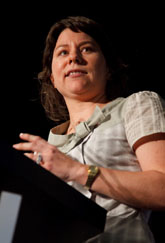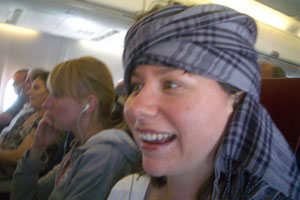So, I am thinking this might be my last ever post on this blog.
I have reached the point where there is not really much new stuff to report.
I know it has only been 7 months since I got the implant (7 months! is that all???! Can you believe it?) But already, I think I have reached the peak, and plateaued. The implant will not get any better or different now in my right ear. It has reached its’ ‘zenith’.
And what a zenith that is.
I can hear on the phone now. Very well.

It's goodbye TTY, hello normal phone since I had the implant. However, I keep the TTY on my desk just in case! Can't shake the feeling of needing it there.
So well in fact, that I have had a normal phone installed on my desk at work alongside my trusty TTY phone that I always used when totally deaf.
So, as you can see – the cochlear implant actually did what I dreamt it would do – it allowed me to reconnect with the world on the phone again.
I can also hear a lot better in group conversations and meetings. Where I used to strain to hear someone at the other end of a meeting table, now I can sit back and hear almost every word. That never ceases to amaze me.
The things I still can’t do all that well are:
- hearing lyrics to music (I can hear them better than I could with the hearing aids, but they are still a bit unclear at times)
- watching movies and TV – I still need captions if I am going to really relax and enjoy movies and TV – however, I have been to see Avatar and
District 9 without captions, and understood most of it. I can also understand most TV news without captions.
- I still tend to lip-read in noisy environments, but I can hear people a lot better in noise.
So, if I am going to leave anyone with a word of advice, or perhaps a message to the deaf community, or maybe parents considering an implant – having been through this all before, having met so many people who’ve had implants, having talked to ENT surgeons, doctors, audiologists and researched online – it would be this:
Kate’s Final View on Cochlear Implants
Disclaimer, this is only my view, no one elses. You might think it’s completely wrong, yo! If you do, then leave a comment, but make sure its a clever, well-thought out comment. I’ll delete stoopid ones!
- A cochlear implant is not a cure for deafness. It is just like a hearing aid, except it is implanted in your head.
- It does work wonders for some people, and not so well for others, just like hearing aids. To find out whether you are a good candidate, you need to see your cochlear implant specialist. A normal audiologist just won’t cut it – they just don’t know the real facts and figures.
- It appears that people who go deaf later in life are probably going to benefit most. I was one of those, losing hearing over ages 11-19 years.
- It appears that people who are deaf since birth, and get the implant after 5 years old seem to find it harder to adjust – maybe because of crucial years of language development have passed? Not sure.
- From what I have seen, deaf people who get an implant before the age of 5 years old seem to find their cochlear implant more useful.
- Even with an implant, you will always be deaf, and something like 20 per cent of the time you will not be using it (i.e. swimming, shower, in bed, when playing messy sports), so it pays to learn sign language and lip-reading to use with your family and friends.
I am glad I got the implant. I am also glad I waited because it was an emotional ride. But I would do it all again, definitely. If I had a deaf child tomorrow, I would give it a cochlear implant before the age of 4, teach it sign language and show it how to lip-read.
There, getting off my soap-box now.
Here are my final test results for the 6 month test at the Sydney Cochlear Implant Centre – please note the disclaimer my audi asked that I include on my hearing aid result!

These are the test results for my Phonak hearing aid in my right ear: Note: These hearing aids use “Input Compression” or “AGCI” (Automatic Gain Control for inputs). This feature means that the hearing aids vary the amount of amplification according to the loudness of incoming sounds. Soft sounds are amplified more, while loud sounds are amplified less. The complexityof the aids means that they amplify warble sounds used in aided threshold testing differently to running spech. For this reason, aided thresholds measuired with a non-linear aid can only give a general impression about what is audible for complex sounds such as running speech.
My final speech recognition tests were:
Sentences
- 100 per cent for both hearing aid and cochlear implant together
- 100 per cent for just the cochlear implant
- 66 per cent for just my old hearing aid
Words
- 84 per cent for just the cochlear implant (I was zero per cent when I used my hearing aid)
- 20 per cent for just my hearing aid
So, I as you can imagine, I am contemplating getting a second cochlear implant.
But I am going to hold off for a few years, only because the hearing aid balances out the sound of the cochlear implant, and makes everything sound ‘normal’.
So I guess you could say ‘watch this space’ – I may come back with a new blog:
“Kate’s Second And Hopefully Final Cochlear Implant”!
Who knows!
Until then, bye, and thanks for reading!






